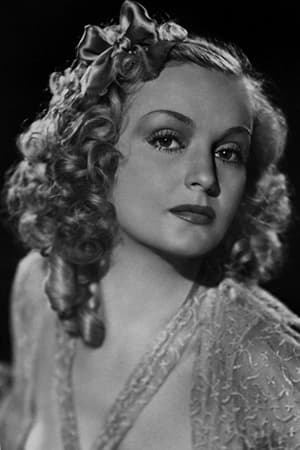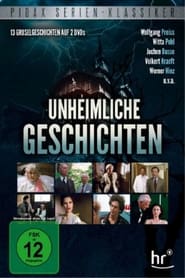
Camilla Horn
The daughter of a railroad official, Camilla Horn was educated in Germany and Switzerland. She initially trained as a dressmaker and received her first job experience in a fashion salon in Erfurt. This was merely a stepping stone for a performing career which began with dance lessons in Berlin and subsequent acting studies under Lucie Höflich. The lithe, blond and strikingly beautiful Camilla soon appeared in cabaret revues staged by Rudolf Nelson. By 1926, she was employed as an extra at Ufa, where she was spotted by the director F.W. Murnau, who found in her the ideal representation of Gretchen for his seminal production of Fausto (1926) . The role catapulted Camilla to instant stardom. Within a year, she was signed by United Artists in Hollywood, befriending Charles Chaplin and, more importantly, studio chairman Joseph M. Schenck. The friendship with Schenck may, or may not, have led to an affair -- depending on which story one is to believe -- but it did result in two high profile starring roles opposite John Barrymore in the torrid melodramas Tempestad (1928) and Amor eterno (1929), both produced by Schenck. Neither film was a commercial success. With the coming of sound, Camilla returned to Europe, briefly appearing on stage in London and Paris, before resuming her screen career in Germany. As the 1930's went on, she rarely turned down a role, playing anything from baronesses and fashion models, to vamps and 'fallen women'. The quality of her films was variable, but there were several noteworthy standouts, such as Hans in allen Gassen (1930) (opposite Hans Albers), Fiesta en palacio (1934) and Payasos (1938) (as a circus artiste, again with Albers). During this tumultuous decade, Camilla conducted a lengthy affair with the singer Louis Graveure, fifteen years her senior. This came to an end in 1938, when Graveure was suspected of espionage by the Gestapo and fled to England, via the Cote d'Azure. After her luxury villa in Berlin was ransacked in search for non-existent clues, Camilla's outspoken criticism of the Nazi regime reached a point where it got her into serious trouble. She saw out the first half of her career with a trio of long forgotten films made in Italy. Having failed in an attempt to flee to Switzerland, she kept a low profile and even tried her hand at farming. After the war, she had a stint as an interpreter for the occupying U.S. forces in Germany. Camilla made a successful return to the stage in a 1948 Frankfurt production of Jean Cocteau's "L'Aigle a Deux Tetes" (aka 'The Eagle Has Two Heads'). She spent the latter half of her acting career playing grand dames, matriarchs and worldly ladies with colourful backgrounds, in both films and on television. In 1974, she was awarded the 'Filmband in Gold' (also known as 'Lola') for lifetime achievement in the German film industry. In her 1985 autobiography, "Verliebt in die Liebe" ('In Love with Love'), she happily recounted her marriages and liaisons.
Known For
Credits
- 2002 ·Los 5 Faust de F. W. Murnauas Herself / Gretchen (archive footage)
- 1992 ·Wenn ich sonntags in mein Kino geh'...as Self
- 1989 ·Spidersas
- 1988 ·Schloß Königswaldas Fürstin Großmutter
- 1987 ·Der Unsichtbareas Olga Benjamin
- 1985 ·The Black Forest Clinicas Dr. Rens′ Mutter
- 1982 ·Unheimliche Geschichtenas
- 1982 ·Frankies Brautas Frau von Kieblitz
- 1979 ·Bayerischer Filmpreisas Self
- 1970 ·Immer bei Vollmondas Wegelin's Mother
- 1970 ·He's at It Againas Paula
- 1969 ·Gestern gelesenas Frau von Marwitz
- 1968 ·Appointment in Beirutas Evelyn Brown
- 1967 ·Dreizehn Briefeas Frau Neumann
- 1958 ·Die Erbinas Elizabeth Almond
- 1953 ·Vati macht Dummheitenas Baronin von Baran
- 1952 ·Königin der Arenaas Diana Bianca, Dompteuse
- 1951 ·Deutscher Filmpreisas Self
- 1949 ·Gesucht wird Majoraas Gritt Faller
- 1948 ·Intimitätenas Helene
- 1944 ·Seine beste Rolleas Elise Sander
- 1942 ·Broken Loveas Corinna Dellys, l'amante di Alberto
- 1941 ·Friedemann Bachas Mariella Fiorini
- 1940 ·Die keusche Geliebteas Renée Lemonier
- 1940 ·Die letzte Rundeas Lilly
- 1940 ·Herz ohne Heimatas Dina Horster
- 1940 ·Polterabendas Lissi
- 1939 ·Zentrale Rioas Diane Mercier
- 1939 ·Roman eines Arztesas Käthe Üding - seine Frau
- 1938 ·In geheimer Missionas Marion
- 1938 ·Fahrendes Volkas Pepita, Kunstreiterin
- 1938 ·Rote Orchideenas Gräfin Ogolenska
- 1937 ·Crooks in Tailsas Vera Dalmatoff
- 1937 ·Sein letztes Modellas Maria Várady
- 1937 ·White Slavesas Manja - seine Tochter
- 1935 ·The Red Rideras Hasia Nowrowska
- 1934 ·Ich sehne mich nach diras Ivonne Brandt
- 1934 ·Der letzte Walzeras Vera
- 1934 ·A Waltz for Youas Fürstin Stefanie
- 1934 ·The Luck of a Sailoras Louise
- 1934 ·Die große Chanceas Helga
- 1934 ·Der Doppelgängeras Jenny Miller
- 1934 ·If I Were Kingas Inge Winkler
- 1933 ·Racoczy-Marschas Vilma
- 1933 ·Money Governs the Worldas Lilly
- 1933 ·Matinee Idolas Sonia Vance
- 1933 ·The Love Nestas Fifi
- 1933 ·Moral und Liebeas Vera
- 1932 ·The Return of Rafflesas Elga
- 1932 ·The Cheeky Devilas Alice Ménard
- 1932 ·The Five Accursed Gentlemenas Camilla
- 1931 ·The Night Without Pauseas Letta Larbo
- 1931 ·Frivolous youthas
- 1931 ·I Go Out and You Stay Hereas Gaby
- 1931 ·The Song of the Nationsas
- 1931 ·Sunday of Lifeas Ellen Hobart
- 1930 ·Hans in Every Streetas Elisabeth, the Bride
- 1930 ·The Great Passionas Eva von Loe
- 1930 ·Morals at Midnightas Nelly Wendt
- 1930 ·Fundvogelas Andrea
- 1930 ·Mein Herz gehört Dir...as Diane D'Artois
- 1929 ·Die Königslogeas Alice Doren
- 1929 ·Three Around Edithas Lady Edith Trent
- 1929 ·Eternal Loveas Ciglia
- 1928 ·Tempestas Princess Tamara
- 1927 ·Der fröhliche Weinbergas Clärchen Gunderloch
- 1927 ·Eva and the Grasshopperas Camille de Saxe
- 1927 ·The Bordellos of Algiersas Adrienne Brisson
- 1926 ·Madame Wants No Childrenas
- 1926 ·Faustas Gretchen Marguerite
- 1926 ·Tartuffeas (uncredited)
- 1925 ·Ways to Strength and Beautyas

